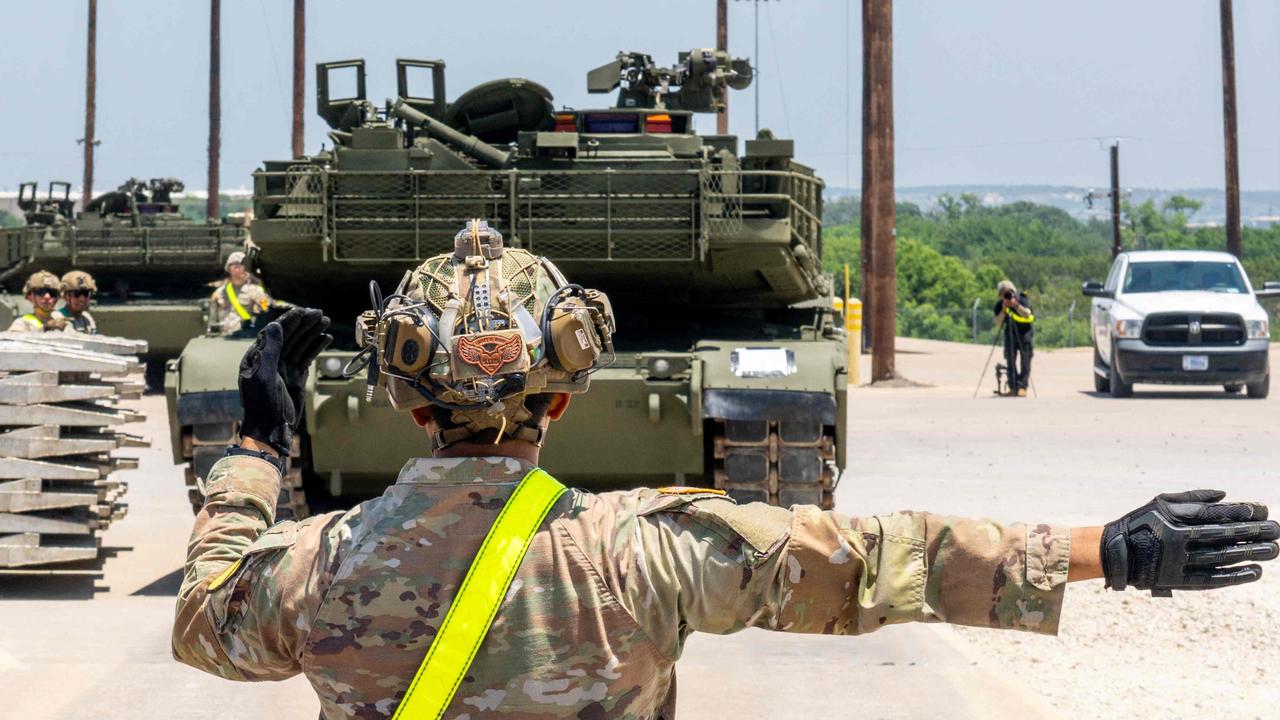Rio Tinto extends poor iron ore run as Pilbara shipments fall
The miner is still struggling with the decisions of the past, as output from the Pilbara fell in the March quarter.

Business
Don't miss out on the headlines from Business. Followed categories will be added to My News.
Rio Tinto has warned it faces an uncertain outlook over the rest of the year as the conflict in Europe and coronavirus lockdowns in China threaten global economic growth, and the company’s operations struggle to recover from ongoing performance issues.
Rio released its quarterly production report on Wednesday, confirming its dominant iron ore division put in another poor performance, with output from its Pilbara operations well down on the same time last year.
Rio shipped 71.5 million tonnes of iron ore in the March quarter, down 8 per cent on the first three months of 2021, including 10.9 million tonnes of lower grade products.
The iron ore giant had previously flagged it expected lower output in the early part of 2022 as it struggles to bring its new Gudai-Darri mine online and make up the gap in higher grade output.
UBS analysts had expected Rio to ship about 72 million tonnes in the March quarter, and RBC had tipped shipments of just over 73 million tonnes.
Rio is still struggling to get its new Gudai-Darri mine into production to replace high-grade tonnes lost through mine depletion elsewhere in the Pilbara, and said on Wednesday it faces problems commissioning other new mines.
“Pilbara operations had a challenging first quarter, as expected, as ongoing mine depletion was not offset by mine replacement projects, with delayed commissioning of Gudai-Darri and ongoing commissioning challenges at the Mesa A wet plant continuing to impact production ramp up at Robe Valley,” Rio said.
International travel restrictions are believed to have played a major part in the troubles at Mesa A, crimping the company’s ability to inspect components and construction materials delivered to the processing plant. That meant substandard materials slipped through, forcing Rio to find replacements and delaying the commissioning process.
Rio said its operations have also been affected by the opening of WA’s hard border to interstate visitors, with rising coronavirus cases also likely to impact output in the current quarter.
“We expect increased production volumes and improved product mix in the second half with the commissioning and ramp up of Gudai-Darri, commissioning of the Robe Valley wet plant and improved mine pit health. Full year shipment guidance remains unchanged,” Rio said.
Rio has previously said it expects to ship 320 to 335 million tonnes of iron ore in 2022.
But, with new mines unlikely to make any real impact until the second half of the year, Rio faces an uphill battle to meet its annual guidance. To meet even the bottom end of its current range Rio would need to ship 83 million tonnes each quarter through the rest of 2022.
If its June period falls in line with its March quarter result, Rio would need to export more than 175 million tonnes in the second half of the year – levels close to the theoretical maximum capacity of its Pilbara network.
Rio also warned its guidance remains subject to weather and market conditions, saying tight labour markets and global supply chain issues remained a significant risk in the months ahead.
Rio chief executive Jakob Stausholm said the company had made “notable” progress on its long-term expansion plans, with the start of underground mining at the company’s giant Oyu Tolgo copper mine, the acquisition of a lithium project in Argentina and progress made towards the development of the massive Simandou iron ore project in Guinea.
But Mr Stausholm conceded the company’s current operations were still not performing to the company’s expectations.
“Production in the first quarter was challenging as expected, re-emphasising a need to lift our operational performance,” he said.
“As we ramp up Gudai-Darri, our iron ore business will have greater production capacity and be better placed to produce additional tonnes of Pilbara blend in the second half.”
Rio said demand for the commodities it produces is still strong, along with pricing, but warned of a more uncertain global outlook amid geopolitical tensions across the world.
“Market expectations have been revised downwards amid sustained high inflation, the outbreak of the Russia-Ukraine war, and a resurgence of Covid-19 lockdowns in China,” the company said.
“Further downside risks include a prolonged war and other geopolitical tensions, extended labour and supply shortages, and monetary policy adjustments to curb inflation.”
And, while Rio left its guidance on costs intact in Wednesday’s quarterly production report, the global mining giant warned that soaring fuel and other input costs also posed a threat to global economic growth.
“Recent input cost increases are the largest raw material cost hike since the Oil Crisis in 1973. Rising interest rates globally pose downside risks to economic growth,” the company said.
Rio’s aluminium output also fell in the March quarter due to the lingering impact of strikes at the company’s Kitimat smelter in Canada, with aluminium output of 700,000 tonnes in the period, down 8 per cent compared to the March 2021 quarter.
Bauxite production was steady at 13.6 million tonnes.
Copper production lifted 4 per cent in the period, to 125,000 tonnes as output from Rio’s Kennecott mine in the US lifted.
Rio shares closed down $33.36, or 2.8 per cent, at $118.30 on Wednesday.





